What is the Best Material for a Hot Tub Deck?
Contents
Adding a hot tub to your outdoor space creates a luxurious retreat right at home, but choosing the right decking material is crucial for safety, longevity, and aesthetics. The perfect hot tub deck needs to withstand significant weight, resist moisture damage, and maintain its appearance despite exposure to chemicals and varying weather conditions.
In this comprehensive guide, we’ll explore the best materials for hot tub decks and everything you need to know before installation. Whether you’re building a new deck specifically for a hot tub or reinforcing an existing structure, we’ve got you covered with expert advice and practical tips.
How Do I Know If My Deck Can Handle a Hot Tub?
Before selecting materials, it’s essential to understand the structural requirements for a hot tub deck.
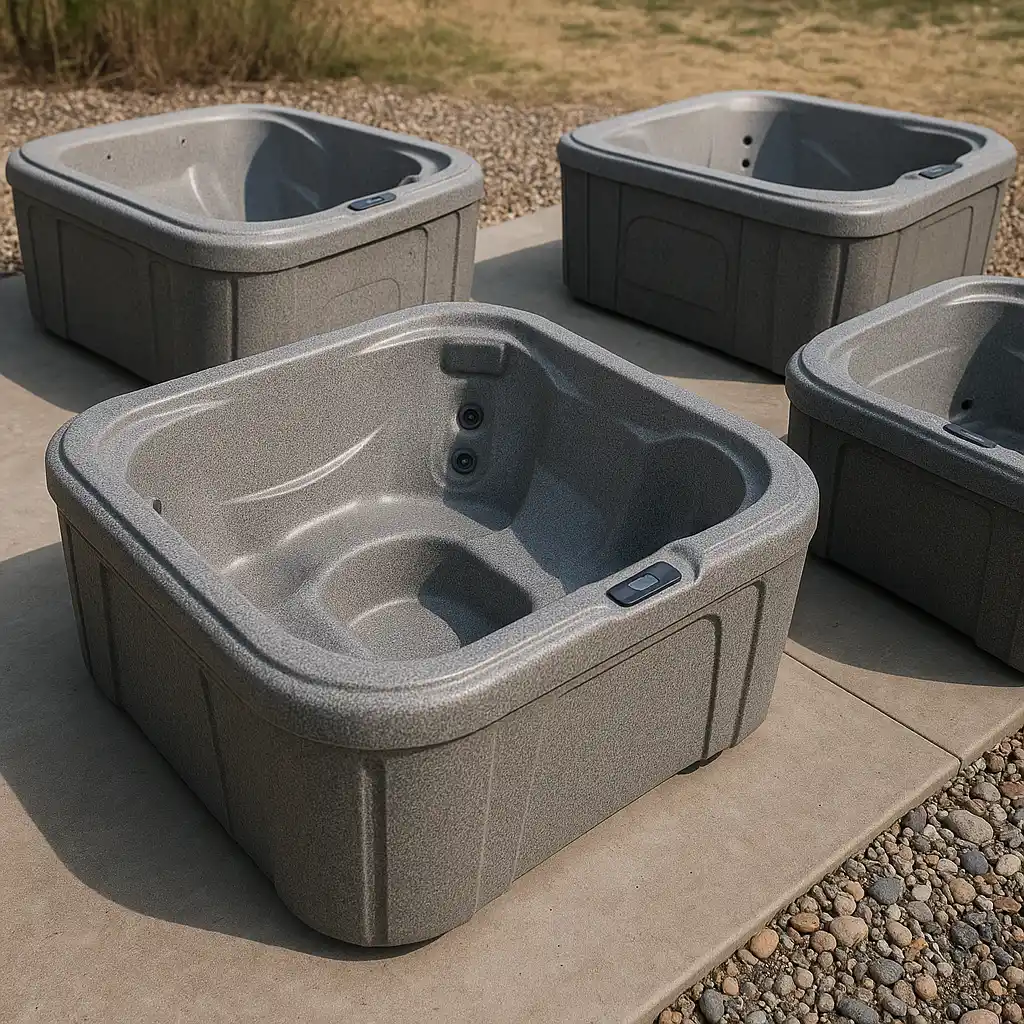
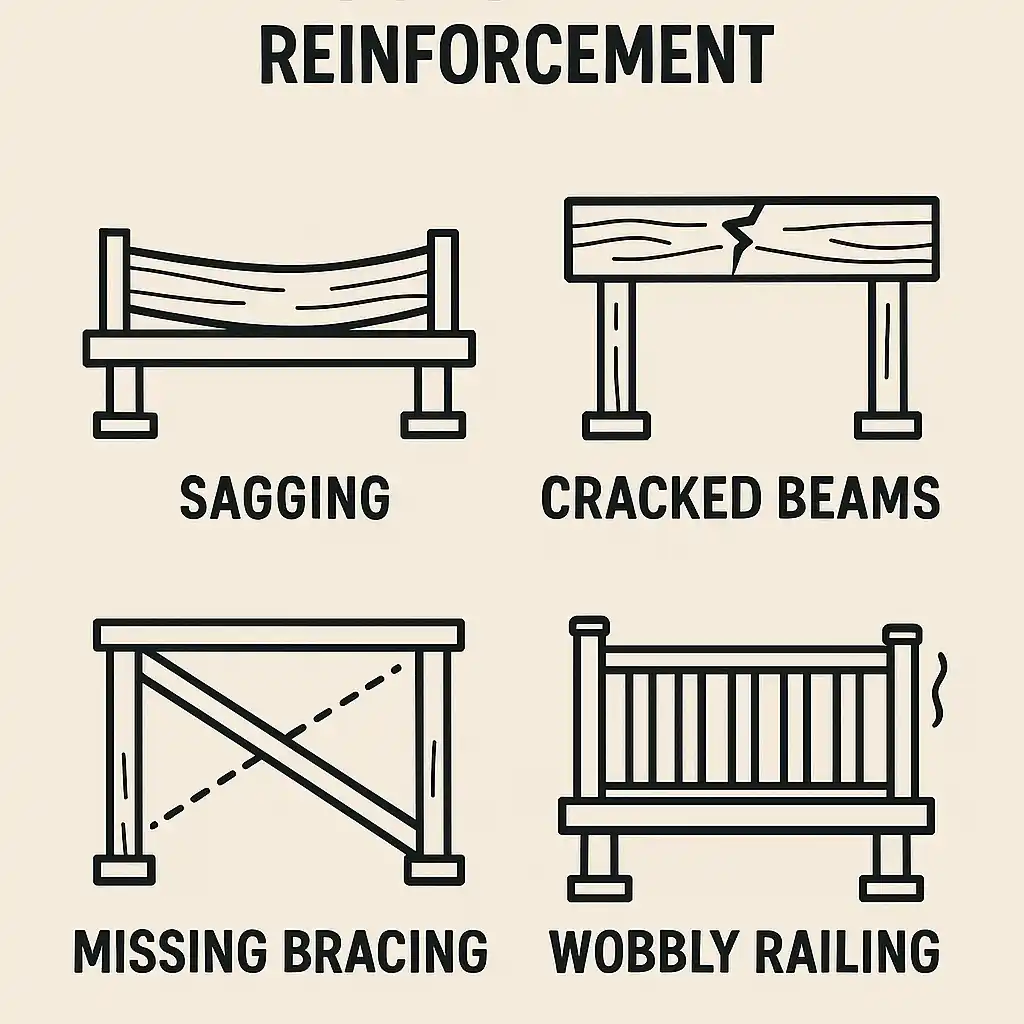
Weight Considerations
A standard 7-foot square hot tub filled with water and occupants can weigh between 3,000-6,000 pounds. This concentrated load requires substantial structural support. Here’s how to determine if your deck can handle a hot tub:
- Consult professionals: Before installation, have a structural engineer or experienced deck builder assess your existing deck or create plans for a new one.
- Calculate the load capacity: Most residential decks are designed to support 40-50 pounds per square foot. A hot tub requires 100+ pounds per square foot capacity.
- Inspect the foundation: The deck’s footings, posts, and beams must be adequate to support the additional weight. Concrete footings should extend below the frost line and be at least 12-18 inches in diameter.
- Check joist spacing and sizing: For hot tubs, joists should typically be:
Signs Your Deck Needs Reinforcement
If you’re considering adding a hot tub to an existing deck, watch for these warning signs:
- Visible sagging or bouncing when walked on
- Railings or stairs that feel loose
- Cracked or rotting wood components
- Rusty or corroded hardware
- Missing or damaged support posts
When in doubt, reinforcement options include:
- Adding additional support posts and beams
- Installing more concrete footings
- Strengthening existing joists with sister joists
- Creating a dedicated reinforced area specifically for the hot tub
Building Better Outdoor Spaces, One Deck at a Time
What is the Best Hot Tub Material?
While our focus is on decking materials, understanding hot tub construction helps inform your deck material choice, as they need to complement each other in terms of aesthetics and functionality.
Acrylic Hot Tubs
Pros:
- Durable and long-lasting (15-20 years with proper care)
- Smooth, non-porous surface that’s easy to clean
- Available in various colors and finishes
- Excellent heat retention
Cons:
- Heavier than some alternatives
- Higher initial cost
- Can crack if not properly supported
Rotomolded Plastic Hot Tubs
Pros:
- Lightweight and more affordable
- Good insulation properties
- Highly resistant to cracking
- Easy to transport and install
Cons:
- Less luxurious appearance
- Fewer design options
- Typically smaller capacity
Wood Hot Tubs
Pros:
- Natural aesthetic that complements wooden decking
- Traditional, rustic appeal
- Often made from sustainable materials like cedar or redwood
- Natural insulation properties
Cons:
- Requires regular maintenance
- More susceptible to water damage over time
- Generally more expensive
- Heavier when filled
Your hot tub material should factor into your decking choice for visual harmony and practical considerations like weight distribution and maintenance compatibility.
What is the Best Deck Material for Hot Weather?
Hot tub decks are frequently exposed to temperature extremes, making heat resistance an important consideration. Here are the top-performing materials for hot weather conditions:
Composite Decking
Pros in hot weather:
- Minimal heat absorption compared to traditional wood
- Resistant to warping, cracking, and swelling in high temperatures
- Available in lighter colors that reflect rather than absorb heat
- Maintains structural integrity despite temperature fluctuations
Cons:
- Premium composite brands can be expensive
- Lower-quality options may fade over time in intense sun
- Can feel hot underfoot in direct sunlight (though less than pressure-treated wood)
PVC Decking
Pros in hot weather:
- Excellent heat reflection properties
- Contains no wood fibers, eliminating risk of moisture absorption and heat-related expansion
- Highly resistant to UV damage
- Typically cooler to the touch than other materials
Cons:
- Higher cost than wood or basic composite options
- Can produce more noise when walked on in extreme heat
- Limited color options compared to composites
Modified Wood (Thermally Modified or Acetylated)
Pros in hot weather:
- Treated to withstand temperature extremes
- More stable than traditional wood in fluctuating conditions
- Natural appearance with enhanced durability
- Environmentally friendly alternative to pressure-treated lumber
Cons:
- Higher cost than standard pressure-treated wood
- May require special fasteners and installation techniques
- Less widely available than other options
Tropical Hardwoods
Pros in hot weather:
- Naturally resistant to heat and humidity
- Dense grain structure prevents warping
- Attractive natural appearance
- Extremely durable in all weather conditions
Cons:
- Premium price point
- Environmental concerns with sourcing
- Requires regular maintenance to maintain appearance
- Heavy weight may require additional structural support
For hot tub environments, materials with low heat retention, minimal expansion/contraction rates, and resistance to moisture are ideal. Composite and PVC options tend to perform best in these conditions.
What Material is Best for a Hot Tub Cover?
A quality hot tub cover is essential for energy efficiency, water cleanliness, and deck protection. The right cover material prevents water from constantly splashing onto your deck, reducing maintenance needs and extending deck lifespan.
Marine-Grade Vinyl
Pros:
- Waterproof and resistant to chemical damage
- UV-treated to prevent sun damage
- Available in various thicknesses for different climates
- Relatively affordable
Cons:
- Can crack in extreme cold if not properly treated
- May show wear after 3-5 years in harsh conditions
- Requires regular conditioning to prevent drying
Polyethylene Foam Core
Pros:
- Excellent insulation properties
- Lightweight yet durable
- Mold and mildew resistant
- Good weight-to-strength ratio
Cons:
- Must be encased in a protective covering
- Can absorb water if the outer covering is damaged
- Varies significantly in quality between manufacturers
Aluminum Hot Tub Covers
Pros:
- Exceptional durability (10+ years)
- Superior weight support (prevents sagging)
- Excellent insulation when combined with foam
- Completely weatherproof
Cons:
- Significantly more expensive
- Heavier and may require assistance to remove
- Less common and harder to find replacement parts
When selecting a hot tub cover, consider:
- R-value (insulation effectiveness)
- Weight capacity (should support at least 20 pounds per square foot)
- Sealing capabilities to prevent steam and moisture escape
- Locking mechanisms for safety
A quality cover not only protects your hot tub but also reduces the exposure of your deck to moisture, extending its lifespan and reducing maintenance requirements.
What is the Best Deck Material for a Hot Tub?
Now for the main question: which decking material performs best specifically for hot tub installations? Let’s compare the top contenders:
Pressure-Treated Wood
Pros:
- Cost-effective initial investment
- Readily available and familiar to most contractors
- Can be reinforced to support significant weight
- Accepts stains and sealants for customization
Cons:
- Requires regular maintenance (staining/sealing every 1-2 years)
- Prone to warping, cracking, and splinters over time
- Less resistant to moisture and chemicals from hot tubs
- Shorter lifespan (10-15 years) when constantly exposed to moisture
Best for: Budget-conscious homeowners willing to perform regular maintenance, especially in covered areas with less direct exposure to splashing.
Composite Decking
Pros:
- Exceptional resistance to moisture, chemicals, and staining
- Minimal maintenance requirements (occasional cleaning only)
- No splinters, warping, or cracking
- Long lifespan (25+ years) even with hot tub exposure
- Available in various colors and textures that mimic wood
Cons:
- Higher initial investment than pressure-treated wood
- Can become slippery when wet if not selected with anti-slip properties
- May fade slightly over time in direct sunlight
- Requires specific structural considerations due to different expansion/contraction rates
Best for: Homeowners seeking long-term value, minimal maintenance, and superior performance in wet conditions.
PVC Decking
Pros:
- 100% moisture-proof with no absorption issues
- Impervious to hot tub chemicals
- Cooler surface temperature than other materials
- Will not splinter, crack, or warp
- Lightweight yet durable
Cons:
- Among the most expensive decking options
- Can sound hollow or artificial underfoot
- Limited color selection compared to composites
- Requires special fastening systems for proper installation
Best for: Luxury installations where performance and longevity are primary considerations over budget.
Tropical Hardwoods (Ipe, Cumaru, Tigerwood)
Pros:
- Natural resistance to moisture, insects, and decay
- Exceptional density and hardness for strength
- Striking natural beauty and grain patterns
- Can last 25+ years with proper maintenance
- Naturally slip-resistant when textured
Cons:
- Premium price point (similar to high-end composites)
- Requires special tools and fasteners for installation
- Needs regular oiling/sealing to maintain appearance
- Sourcing concerns regarding sustainability
Best for: Homeowners seeking natural materials with premium performance and willing to perform regular maintenance.
Concrete or Pavers
Pros:
- Unmatched weight-bearing capacity
- Completely impervious to water damage
- Virtually unlimited design possibilities
- Exceptional longevity (50+ years)
- Low long-term maintenance
Cons:
- Labor-intensive installation
- Poor drainage unless specifically designed
- Can be cold and uninviting aesthetically
- Difficult and expensive to modify after installation
Best for: Ground-level installations or homeowners prioritizing maximum durability and minimal upkeep.
The Verdict: Best Overall Material for Hot Tub Decks
Based on the balance of performance, maintenance, longevity, and value, high-quality composite decking emerges as the best overall material for most hot tub installations. It offers:
- Superior resistance to the constant moisture exposure from splashing and steam
- Minimal maintenance requirements despite challenging conditions
- No risk of splinters for bare feet around the hot tub
- Excellent longevity even with regular exposure to chemicals and moisture
- Attractive appearance that complements most hot tub designs
For premium installations where budget is less of a concern, PVC decking offers marginally better performance, particularly in terms of heat reflection and complete waterproofing.
For traditionalists preferring natural materials, modified wood or tropical hardwoods provide the best performance, though with higher maintenance requirements.
Final Considerations for Hot Tub Deck Installation
Beyond material selection, keep these factors in mind for a successful hot tub deck project:
Structural Support
Regardless of material choice, proper structural support remains the most critical factor. Ensure:
- Adequate footings extending below the frost line
- Proper joist sizing and spacing (typically 12″ O.C. with 2×10 or larger)
- Additional beam support beneath the hot tub area
- Consideration of the combined weight of water, users, and the hot tub itself
Drainage Planning
Effective drainage prevents standing water and extends deck life:
- Slope the deck slightly away from the house (1/4″ per foot minimum)
- Install deck drainage systems for composite or PVC decking
- Consider permeable designs that allow water to flow through to the ground below
- Ensure splash water has a clear path away from both the deck and home foundation
Access Considerations
Plan for practical use and maintenance:
- Allow at least 24″ of deck space around all sides of the hot tub
- Create access panels if the hot tub is built into the deck
- Ensure electrical components are accessible for servicing
- Consider privacy screening and shelter options
Safety Features
Integrate safety elements from the beginning:
- Non-slip decking surface treatments or materials
- Adequate lighting for nighttime use
- Secure railings if the deck is elevated
- Lockable hot tub cover and access gate if required by local code
By carefully considering materials, structure, and these practical elements, your hot tub deck will provide years of enjoyment with minimal maintenance concerns. HomeAdvisor USA can connect you with qualified professionals to ensure your project meets all structural and safety requirements while using the ideal materials for your specific situation.
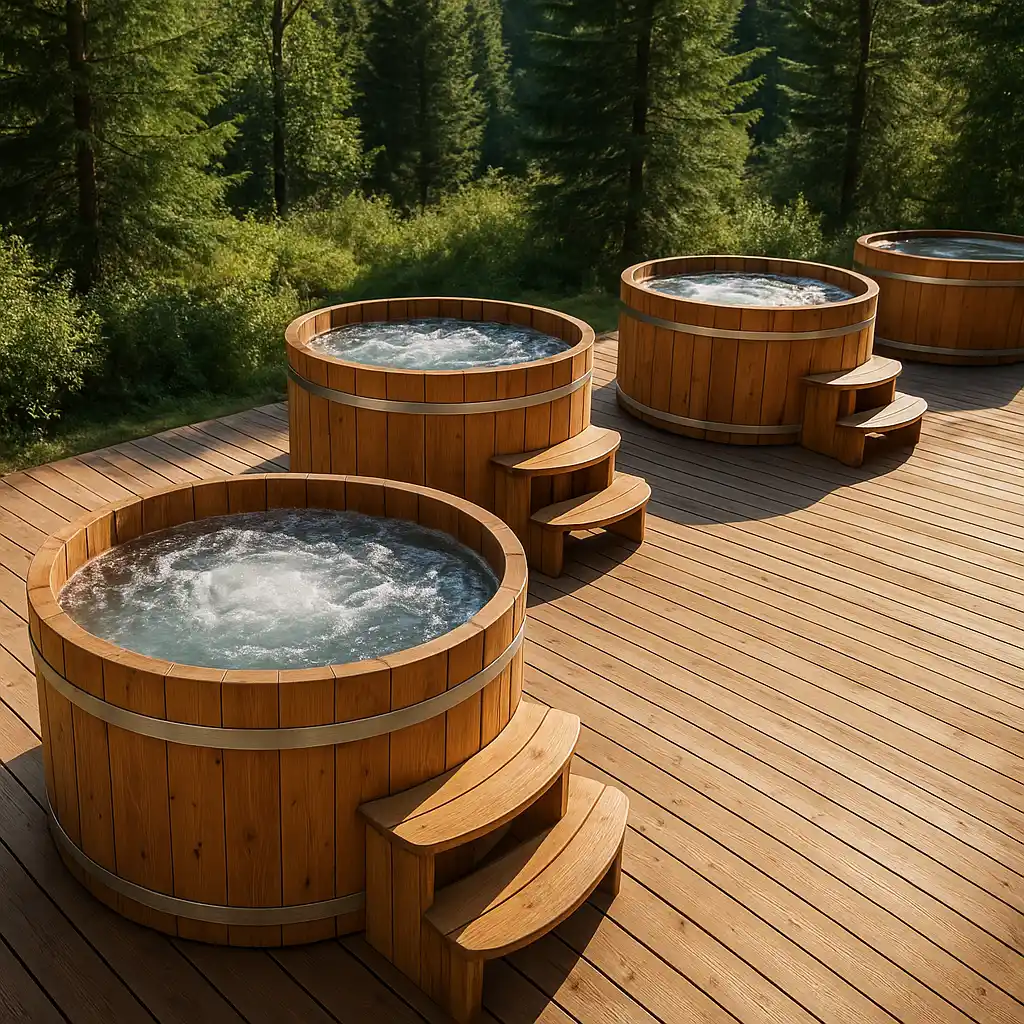

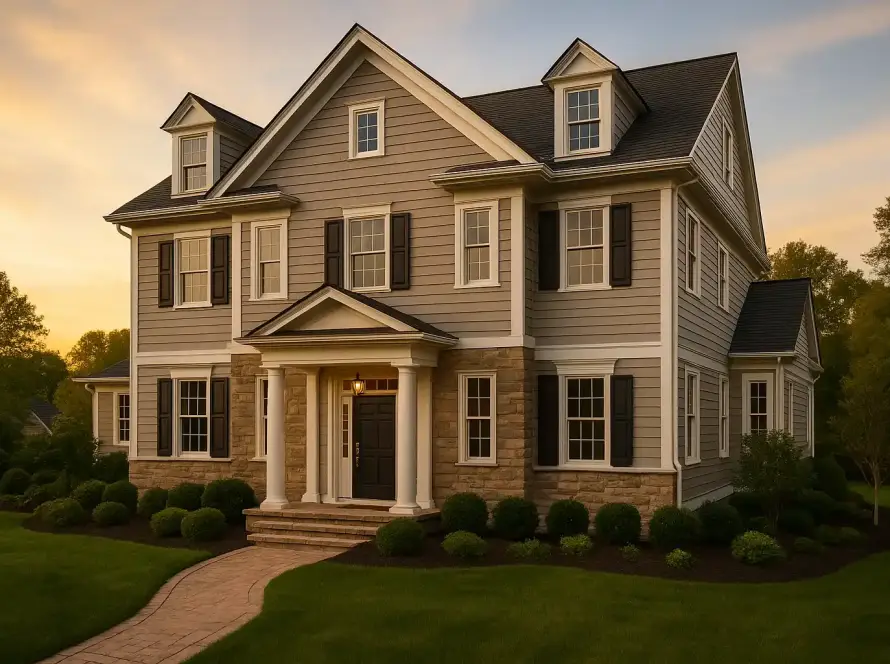
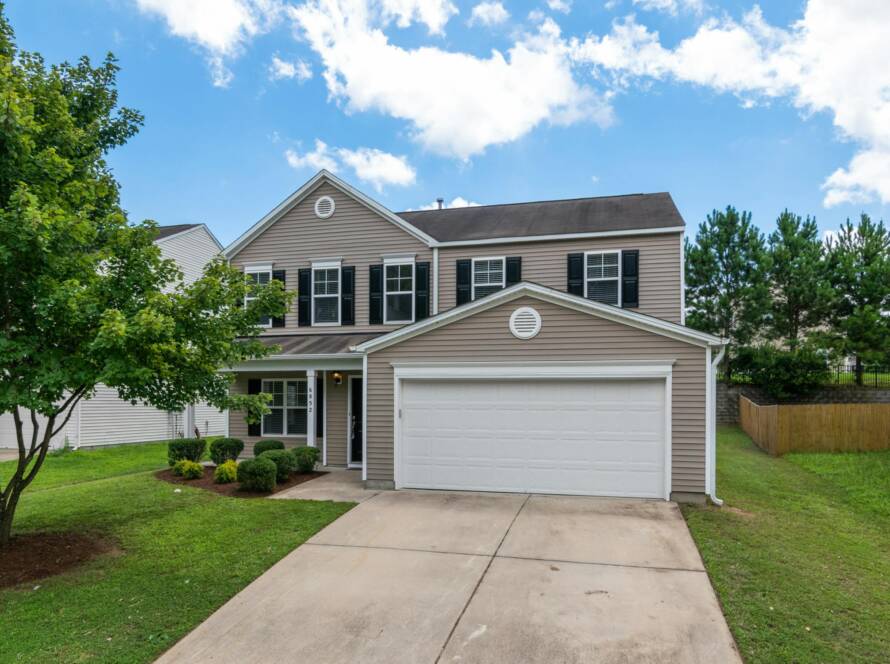
2 Comments
MangoMan
I can’t thank you enough for this incredibly detailed guide! After three contractors gave us wildly different recommendations for our hot tub deck project, I was completely confused about what material would actually work best. This article finally provided clear, unbiased information that helped us make an informed decision.
The section on weight considerations was eye-opening – I had no idea a filled hot tub could weigh up to 6,000 pounds! No wonder proper structural support is so critical. The breakdown comparing composite, PVC, and pressure-treated lumber was particularly helpful, especially with the honest pros and cons of each. We were initially leaning toward pressure-treated wood for budget reasons, but after reading about the maintenance requirements and shorter lifespan in wet conditions, we’re now considering composite as a better long-term investment.
I also appreciated the practical information about foundation requirements and joist spacing. The recommendation for 12″ on center spacing (rather than the standard 16″) is exactly the kind of specific detail our first contractor never mentioned!
We’ve scheduled a consultation with HomeAdvisor USA next week to assess our existing deck’s reinforcement needs. Looking forward to enjoying our new hot tub on a properly built deck that will last for years to come. Thanks for sharing your expertise!
John S.
Thank you so much for your thoughtful comment on our hot tub deck guide! We’re thrilled to hear the article provided exactly the detailed information you needed to make an informed decision.
At HomeAdvisor USA, we understand how confusing it can be to receive different recommendations from contractors, which is why we’re committed to creating comprehensive guides with clear comparisons and honest assessments of all options. Your feedback about the structural specifications and material comparisons being particularly helpful is exactly what we aim for.